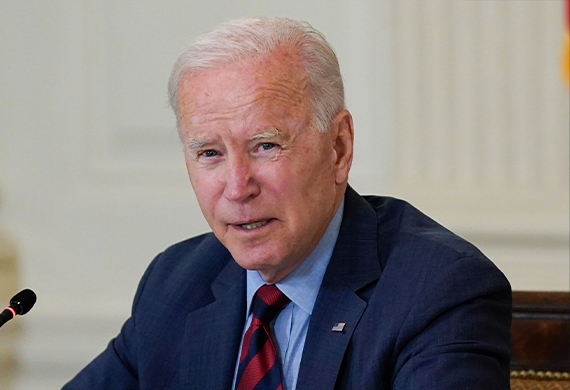
WIC Nutrition Programme for Women and Children receives $53 million from the Biden Administration
By: WE Staff | Thursday, 20 October 2022
In order to increase outreach efforts, advance technology, and improve the shopping experience for families participating in the Special Supplemental Nutrition Program for Women, Infants, and Children, or WIC, the US Department of Agriculture is granting grants totaling $53 million.
The cash, which comes from the American Rescue Plan Act of 2021, is intended to assist state agencies, community organisations, and other NGOs test out fresh approaches of connecting with WIC clients both present and future.
Additionally, it will support initiatives to assist participants in locating WIC-eligible foods in grocery stores, plan for online shopping with WIC benefits, and train grocery staff to better serve beneficiaries. State agencies will also use the money to support text messaging, mobile phone support, and appointment-scheduling tools, as well as other initiatives.
The initiative is made as part of the Biden administration's efforts to increase food aid and reduce hunger in the US.
Low-income children under the age of five, as well as pregnant and postpartum women, can receive food, nutrition education, breastfeeding support, and health care referrals from WIC. By boosting the benefit amount to $35 per person per month, the American Rescue Plan also increased access to fruits and vegetables. This provision was then changed and extended through December of this year.
In February, 6.2 million Americans took part in WIC, an increase of 1.2% over February 2020, according to a recent report from the advocacy organisation Food Research & Action Center. WIC participants injected $7 billion into regional economies.
But in the first two years of the Covid-19 pandemic, participation varied greatly, rising in 21 states and the District of Columbia while falling or remaining constant in the remainder.
According to the center's analysis, North Carolina saw the most rise in participation (21%), while New Mexico saw the worst decrease (20%).
In February, just over 1.4 million women participated, a drop of 5.4% in the previous two years. While the number of infants decreased 7.7% to 1.4 million, the number of kids in the programme increased 8.7% to close to 3.4 million.
Most Viewed
- 1 Women's Health Startup HerMD Closing Doors Amid Industry Challenges
- 2 5 Famous Women in Indian Armed Forces
- 3 Saudi Women No longer Require Male Permission for Clothing Choices, says Prince MbS
- 4 Kolkata Medtech Startup Innovodigm Raises Rs 5.5 Crore Seed Funding Led by IAN Group
- 5 Yamunanagar's Kashish Kalra Honoured after Securing 111th Rank in UPSC Civil Services Exam
- 6 Madurai Appoints Its First Woman Corporation Head
- 7 IAS Vijayalakshmi Bidari Appointed as the new Nagpur Divisional Commissioner
- 8 American Entrepreneur Lucy Guo Overtakes T Swift to become Youngest Female Billionaire
- 9 ICC Women's World Cup 2025 Trophy Showcased at Indore's Holkar Stadium
- 10 Aparna Saxena's Beauty Venture AntiNorm Launches in India
- 11 Vidya Nataraj Co-Founded BlueStone Jewellery & Lifestyle files IPO
- 12 5 Women Freedom Fighters of India
- 13 Dr. G Krishnapriya appointed as CEO for Trichy
- 14 M3M & Sirona Partner to Introduce Menstrual Hygiene Vending Machines in 15 Locations
- 15 Punjab Govt launches SHE Cohort 3.0 Supporting Tech-led Women Startups
- 16 Indian origin Lawyer, Sweena Pannu appointed as the US New Superior Court Judge
- 17 The Aurora Tech Award recognizes 4 Indian Women-led Startups
- 18 Kerala's Republic Day parade featured an all-female tableau
- 19 Manisha Kabbur Becomes Karnataka's First Woman International Karate Coach
- 20 Director K. S. Ravikumar's Daughter Maalica Ravikumar Launches Life Coaching Company 'Evergrowth Academy' for Women
- 21 Leezu's Raises Pre-Seed Funding to Accelerate Growth in Sexual Wellness Industry
- 22 Sattu: Super-easy summer drink for PCOS gut healing
- 23 Swathi Nelabhatla creates Sitha App, India's First Women-Exclusive Gig Platform
- 24 7 Timeless Female Kathak Dancers & their Iconic Legacies
- 25 Meet 7 Iconic Women Architects of Modern India & their Most Impactful Work
- 26 This Woman-led Insuretech Startup is Helping Bridge the Education Financing Gap in India
- 27 Women Leaders Share Lessons Learnt from India Women's WC Win
- 28 5 Enterprising Women Founders Powering Singapore's Tech & Innovation Landscape
- 29 4 Women. 4 Stories. One Vision for Smarter, Stronger Healthcare
- 30 Global Gender Gap Narrows to 68.8%, But Full Equality 123 Years Away: WEF Report 2025
- 31 Changemakers: 7 Women Entrepreneurs Taking the Make in India Movement Forward
- 32 Meet Lucy Guo, The Youngest Self-Made Female Billionaire Disrupting Tech
- 33 How Women are Driving India's Festive Online Shopping Surge


.jpg)



